Overview of Conflict
The global attention at this moment continues to be on the very serious conflict that began on 24 February 2022 when Russia invaded Ukraine. The Russo-Ukrainian war actually began in 2014 when Russia annexed Crimea from Ukraine. Ukraine is the second-largest European nation after Russia, with an area of 603,550 sq. km. (Four times the size of Bangladesh). After the dissolution of the Soviet Union, Ukraine became an independent country, and it chose a foreign policy that would balance cooperation with the European Union (EU), Russia, and other influential countries.
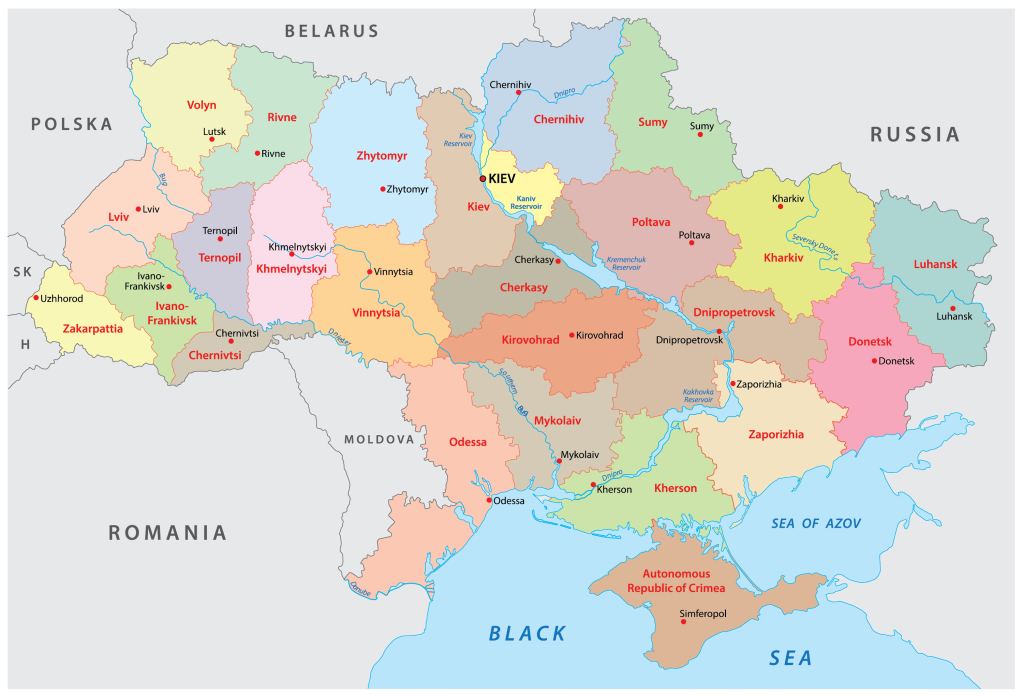
The people of Ukraine had been divided between the pro-Russian and pro-European leaders. The “Revolution of Dignity” of February 2014 culminated in the ousting of pro-Russian President Viktor Yanukovych who refused to sign a political association and free trade agreement with the EU. The strong pro-EU surge of public opinion was of concern to Russia. Crimea, which was part of Ukraine, was important for Russia as its Black Sea fleet was housed in Crimea under a formal treaty with Ukraine. A pro-EU government could upset such an arrangement. It would have very serious geo-strategic implications for Russia. Russia thus intervened militarily and annexed Crimea, and also created self-proclaimed breakaway states of Donetsk and Luhansk.
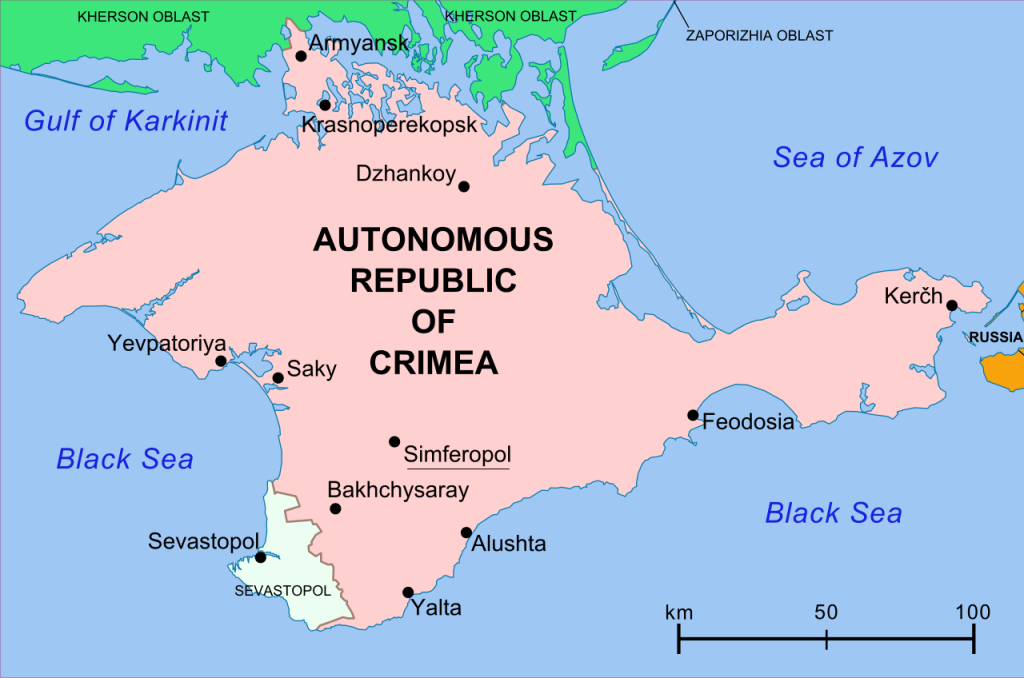
Ukraine hereafter became a pro-EU nation. More recently there was a move to make Ukraine part of NATO. Russia had been cautioning the West against getting NATO to come to its border. Earlier, the Czech Republic, Estonia, Hungary, Latvia, Lithuania, Poland, Slovakia, Bulgaria and Romania had joined the EU. Ukraine’s membership of the EU and NATO would complete a western wall of allied countries by restricting Russia’s access to the Black Sea. With South Korea and Japan being allied to the US, the Russian government was concerned that Russia was being ring-fenced by potentially hostile powers.
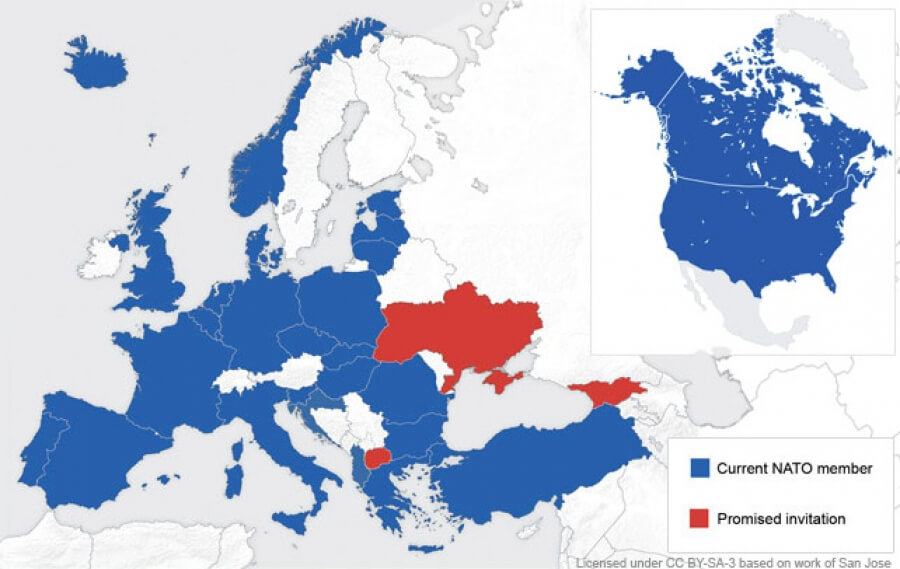
Meanwhile, Russia backed separatist militias in the Donetsk and the Luhansk People’s Republics in Ukraine’s economically important Donbas region bordering Russia. This region has a Russian ethnic majority.
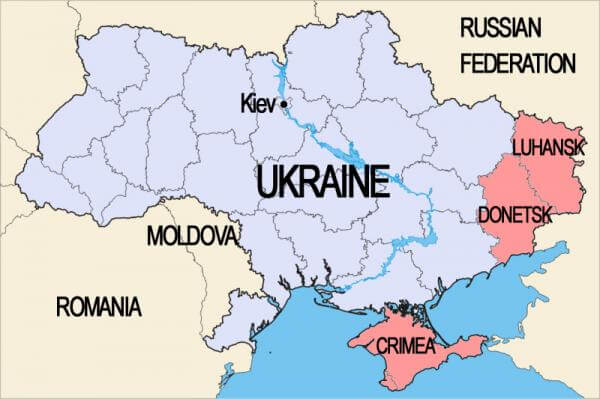
After current president Volodymyr Zelenskyy, took the oath of office on 20 May 2019, amendments were made to the Constitution of Ukraine, which enshrined the irreversibility of the country’s strategic course towards EU and NATO membership. This was the final nail.
In 2021 Russia began a military build-up on the border with Ukraine on the pretext of exercise and escalated tensions. In mid-December 2021, Russia issued a set of demands to withdraw its troops from the Ukrainian border. These demands included a permanent ban on Ukraine’s entry to NATO, reduction of NATO forces in Eastern Europe, and a pullback of the missile systems and military deployments from near Russia’s borders. The United States responded by sending a strong message that any Russian invasion would be met with dire consequences for Russia’s economy. On 24 February 2022, Russia invaded Ukraine, which prompted Ukraine to break diplomatic ties with its eastern neighbour.
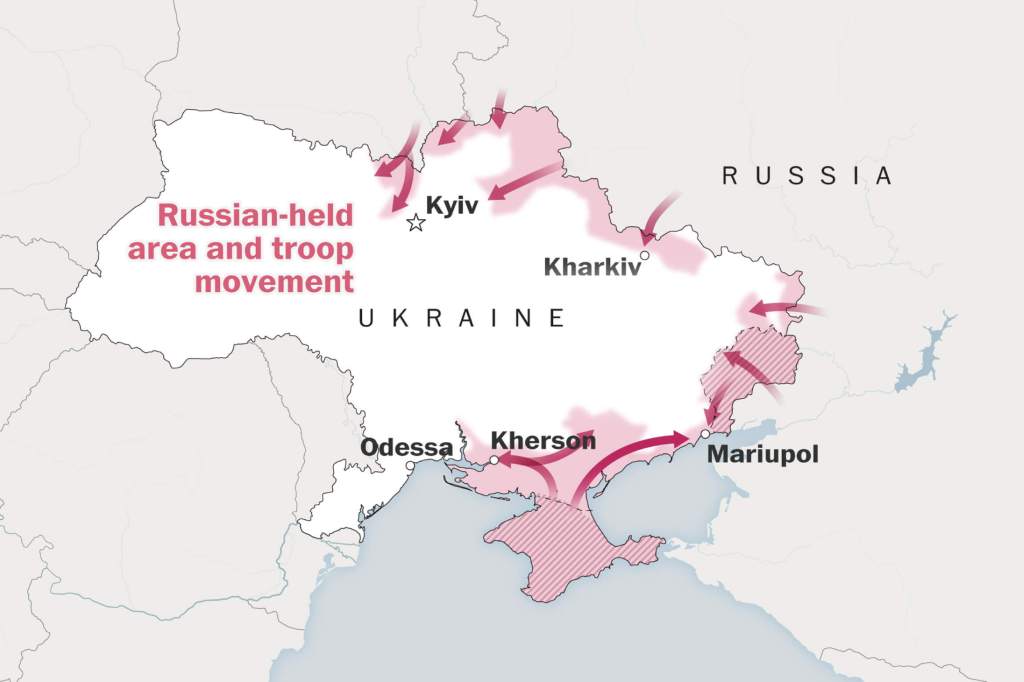
It is in Russia’s interest to install a Russia-friendly government in Ukraine, as is the case in Belarus. The Russian military is targeting mostly military targets to capitulate resistance. Communication systems, including TV towers, are being targeted to control the narrative. Since ultimately the nation would have to be governed, the basic infrastructure is not being targeted.
Henry Kissinger and many others had warned that “to Russia, Ukraine can never be just a foreign country” and that the West, therefore, needs a policy that is aimed at “reconciliation”.
Putin has been adamant that “Ukraine should not join NATO”
Russia also used the ‘N-word implying a nuclear response in case pushed too hard. Ukraine had nuclear weapons when the Soviet Union broke up. But they renounced the same. Some are asking if that was a good decision. If they had nuclear weapons today, would Russia have invaded in this manner?

Ground position in Ukraine today is significant gains for Russia from the south from Crimea till Zaporizhzhia nuclear plant. In the East Luhansk and Donetsk. Mariupol port in the Black Sea. Kherson and Melitopol in the south. Kharkiv has been encircled. From North coming from Belarus, they have crossed Chernobyl and reached close to Kyiv. Kyiv is under attack. The ground war is moving slowly but steadily. There is resistance.
Ukrainian Air Force
The war has seen mostly identical aircraft and systems of original Russian origin pitted against each other.
Ukraine still possesses the world’s 27th largest air force and the 7th largest air force in Europe, largely due to the ability of its domestic defense industry Ukroboronprom and its Antonov subsidiary to maintain its older aircraft. The main inventory of the air force still consists of Soviet-made aircraft. 36,300 personnel and 225 aircraft were in service in the Ukrainian Air Force and Air Defense forces.
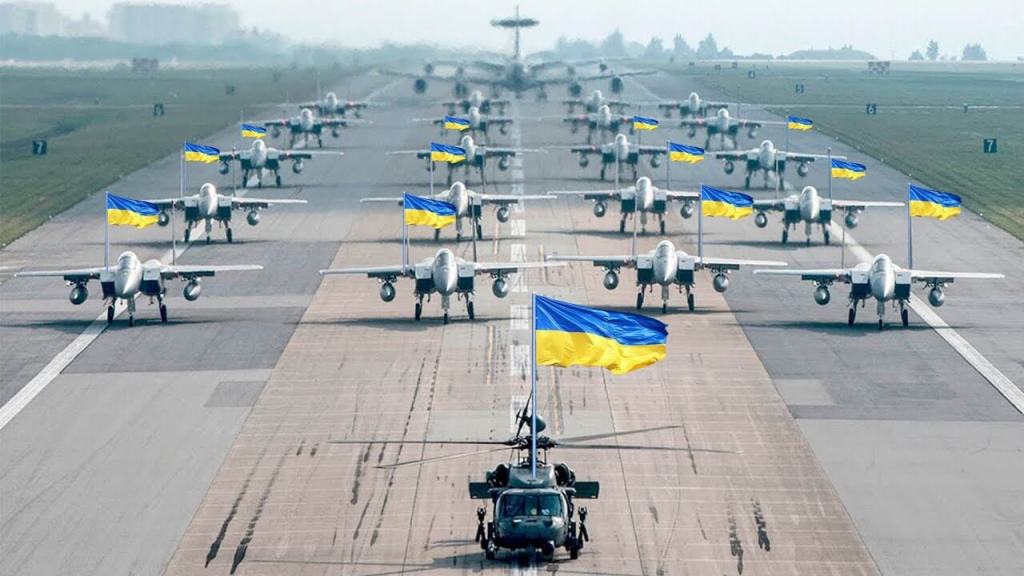
We were shocked to see World’s largest plane An 225 or ‘Mriya’ (The Dream) destroyed in the Russia-Ukraine war a few days back. Only one AN-225 was ever built. Had six engines and 32 Wheels. 650-ton weight, more than Airbus 380. A larger number of An 124s are flying with 20 built.
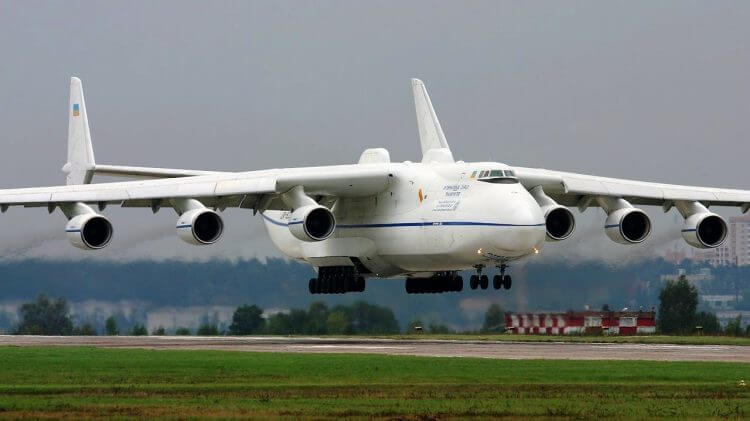
Antonov Design Bureau, after its chief designer, Oleg Antonov, is a Ukrainian aircraft manufacturing and services company. Based in Kyiv, Antonov has built a total of approximately 22,000 aircraft, and thousands of its planes are still operating. India operated An-12 and now operates nearly 100 An-32. Still making new aircraft like An 132 in Dec 2016.
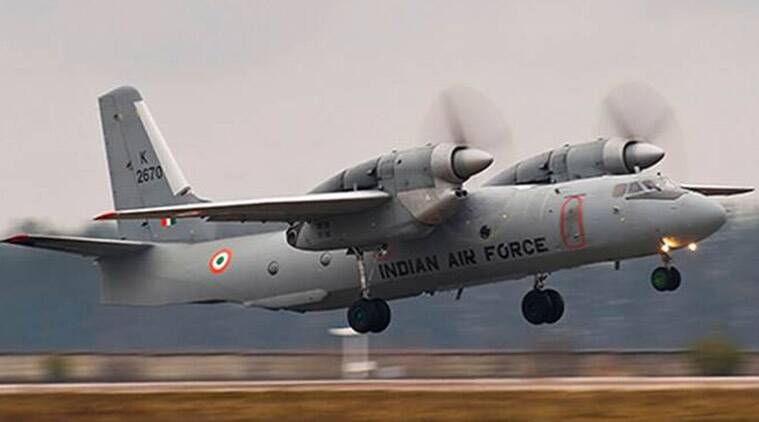
The An-24 and An-26 aircraft, as well as the anti-aircraft systems S-300 and “Buk M1”, have been continually modernized, and their service life has been extended. Ukraine has nearly 100 fighters. MiG-29, Su-24, Su-25, Su-27, L-39 have also been modernized. Given sufficient funding from the Verkhovna Rada, the Defense Industrial Complex of Ukraine, in cooperation with foreign companies and manufacturers, is capable of fully renewing the aircraft arsenal of the Ukrainian armed forces.
There have been air engagements. We have been hearing about the “Ghost of Kyiv”, the nickname given to a disputed MiG-29 Fulcrum flying ace credited with shooting down six Russian planes in the Kyiv offensive on 24 February 2022. According to the Security Service of Ukraine, he has shot down 10 Russian jets as of 27 February. Although not confirmed to be real, the Ghost of Kyiv has been credited as a morale booster for Ukrainians.
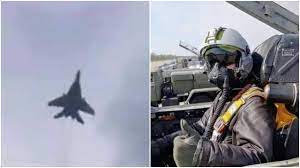
Although some sources consider the Ghost of Kyiv to be an urban legend or war propaganda, its status has nevertheless been credited as a major morale boost for the Ukrainian population to bolster optimism in spite of the Russian invasion.
Similar to the Ghost of Kyiv, on 26 February 2022, social media reports emerged of a Ukrainian ground forces soldier dubbed the “Ukrainian Reaper”, who supposedly killed over twenty Russian soldiers in combat alone.

The Russian Defence Ministry has claimed that over 100 air defence systems and over 90 aircraft have been disabled or destroyed as of March 6, 2022. No official figures from the Ukrainian Defence Ministry were immediately available.
Ukraine has American and Turkish UAVs. We saw the video footage from a UAV of the Mi-25 being shot by a stinger missile.
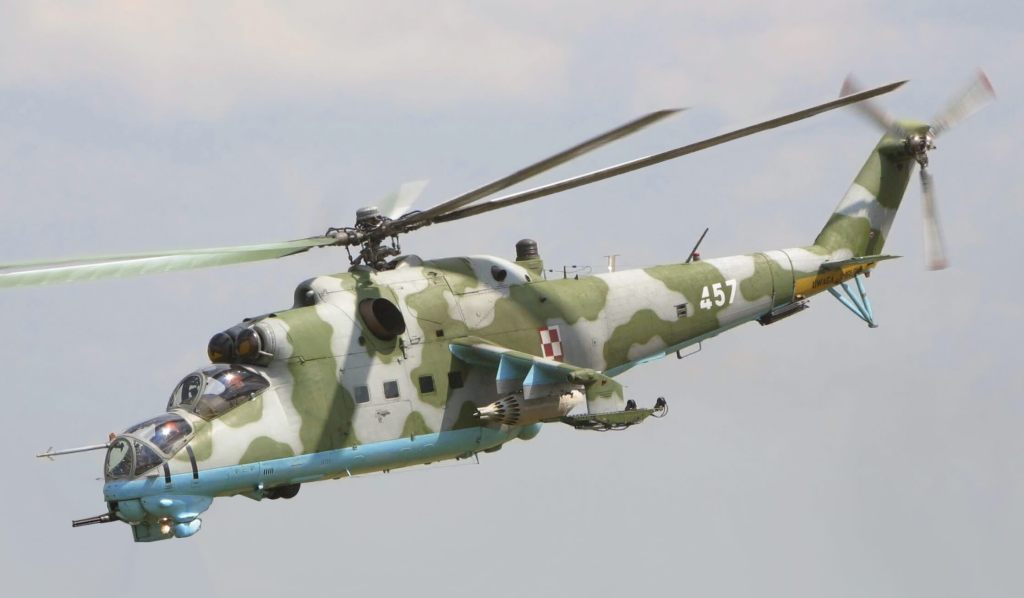
Significant AD systems including S-300 missiles with nearly 500 missiles. Have been getting many Manpads from the West.
Russian Air Force
Russian Air Force – Second Largest with nearly 3,800 aircraft. 8 × Bomber squadrons (4 operating Tu-22M3/MR; 3 operating Tu-95MS; 1 operating Tu-160). 37 × Fighter squadrons (8 operating MiG-29; 3 operating MiG-29SMT; 11 operating MiG-31/MiG-31BM; 10 operating Su-27; 4 operating Su-27SM1/Su-30M2; 1 operating Su-27SM3/Su-30M2). Russia has over 100 Su-35 aircraft. 27 × Attack squadrons (11 operating the Su-24M/Su-24M2; 13 operating Su-25/Su-25SM; 3 operating Su-34). 10 × Attack & Reconnaissance squadrons (1 operating Su-24M/MR; 8 operating Su-24MR; 1 operating Mig-25RB). They have only around 14 fifth Generation Sukhoi Su-57 aircraft which are still under operational evaluation. 1 × AEW&C squadron (1 operating A-50/A50-U). 1 × Tanker squadron (1 operating Il-78/Il-78M). Russia has around 300 modern combat aircraft normally stationed in the Western and Southern Military Districts – within range of Ukraine – and had also relocated regiments from elsewhere in Russia as part of its military build-up prior to the invasion.

Russia’s modern strategy, the Gerasimov Doctrine. “The very ‘rules of war’ have changed. The role of nonmilitary means of achieving political and strategic goals has grown, and, in many cases, they have exceeded the power of force of weapons in their effectiveness. … All this is supplemented by military means of a concealed character.” Gerasimov specifies that the objective is to achieve an environment of permanent unrest and conflict within an enemy state. Does it work? They did that in US Presidential elections. Former captive nations Georgia, Estonia, and Lithuania all sounded the alarm in recent years about Russian attempts to influence their domestic politics and security. Russians did that in Crimea. The same was being done in Ukraine but was only partially working.
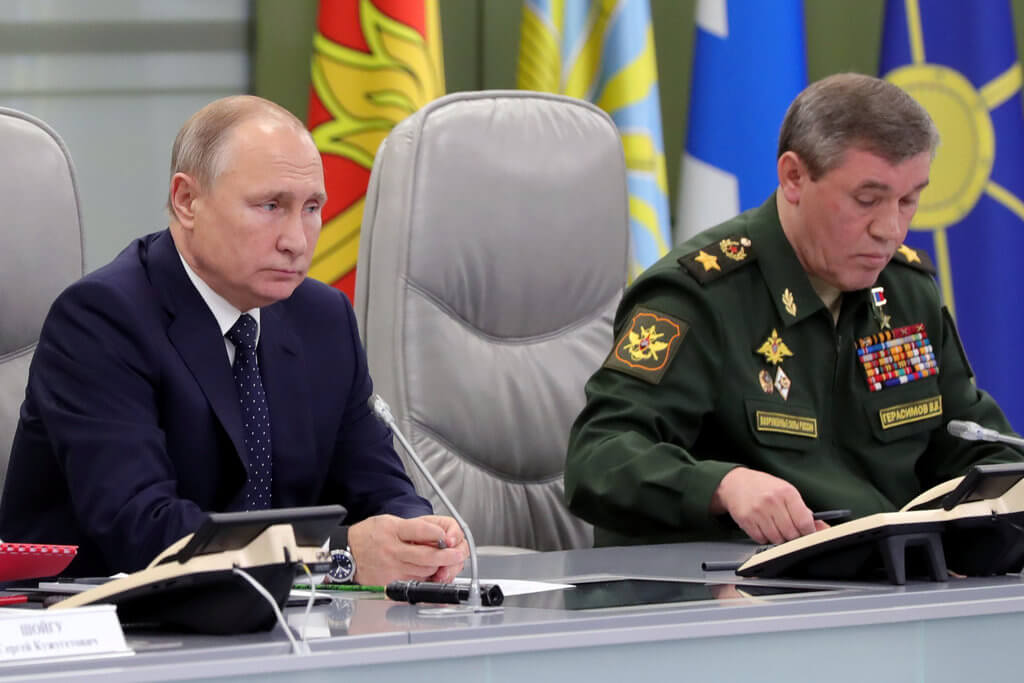
Typical Air Operations
Military aircraft are used for both offensive and defensive purposes. In an offensive role, these aircraft are used in destroying the enemy’s vital installations, airstrips, ordnance depots and supplies, interdiction of enemy lines of communication, close air support to own land forces, and also deters the threats of an enemy airstrike. In a defensive role, it provides defence of air space. In naval warfare, military aircraft plays a significant role to detect and neutralize submarines and warships to keep the seacoast free from enemy attack. Military aircraft also provide logistic supply to forward bases, conduct airlift (cargo and troops), and participate in rescue operations during a national disaster. Military aviation includes fixed-wing aircraft, rotary-wing aircraft (RWA), and unmanned aerial vehicles (UAV). From the early days of military aviation, it has been realized that air power supremacy is vital for winning a war as well as maintaining the sovereignty of any country.
Attributes of Air Power
Whoever controls the air generally controls the surface.
2. Air Power is an inherently strategic force. Deterrence and Coercive Power.
3. Air Power is primarily an offensive weapon.
4. In essence, Air Power is targeting, targeting is intelligence, and intelligence is analyzing the effects of air operations.
5. Air Power produces physical and psychological shock by dominating the fourth dimension-time.
6. Air Power can conduct parallel operations at all levels of war, simultaneously.
7. Precision air weapons have redefined the meaning of mass.
8. Air Power’s unique characteristics necessitate that it be centrally controlled by airmen.
9. Technology and air power are integrally and synergistically related.
10. Air Power includes not only military assets, but an aerospace industry and commercial aviation.
Air Campaign in Ukraine
Intelligence Surveillance and Reconnaissance (ISR). Russians had had a lot of preparatory time. They should have done enough ISR. Also, satellites are very effective for this nowadays. We hope they knew the battle orbat fully.
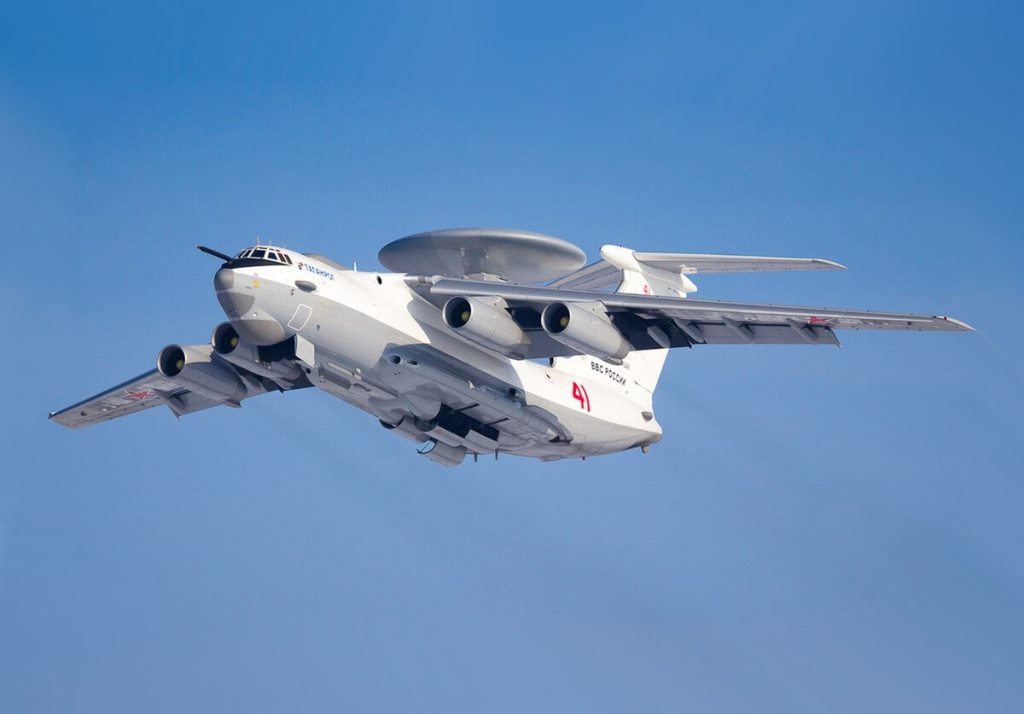
Air Superiority and the Counter Air Campaign. Russia was expected to achieve air superiority, but that does not seem to have happened. The AWACS and AEW&C have hardly been seen. Maybe they were scared that they may be shot. Fighter strikes have also been limited.
Suppression of Enemy air defences should have been done first to knock off the radars and missile batteries. Again, that seems not fully achieved. Ukraine is a big country. 4 times the size of Bangladesh. Also, It had sizeable Armed forces and population against the Russians.
Interdiction Campaign. The main target for Russia had been the political centers. Kharkiv which is the second-largest city was closest to the Russian side. Also in the east were pro-Russian population and republics. So Kharkiv was the first place for an attack. The city was finally encircled. It is not in the Russian interest to get into urban warfare. That would bog them down.

The Ukrainians are counterattacking the beleaguered 36 Combined Arms Army (CAA) 70 km long convoy to the north of Kyiv, breaking it down with the tenacity of their ambushes. Similar Counterattacks east of Kharkiv, Sumy & Chernihiv. The Russian 20 CAA at Kharkiv took the brunt, losing 2-3 BTGs.
RuAF (VKS) could fly limited sorties in the north due to bad weather, but got hammered by MANPADS mostly losing out 4-5 aircraft/ Hptrs on 5 March. It just doesn’t have enough assets to support the wide range of fronts across the north. Russian army still struggling with supplies across.
The Ukrainian Army is hard-pressed all across. The western intelligence & weapons + continuous uninterrupted flow of these will determine how well they can defend effectively.

Counter Surface Force Campaign or Tactical Strikes. Ground-Based Multi Rocket Launch Systems (MRLS) and Helicopter gunships have been extensively used. But we all saw the Mi-25 attack helicopters getting shot by stingers. Surprisingly the Russian aircraft did not use the Missile Warming system or IR flares to ward off the missiles.
Russian ISR and Electronic intelligence components are not delivering, perhaps spread too thin across. VKS (RuAF) support is focused on CAS rather than extended SEAD, here again, limited by lack of multi-role platforms and ops exposure/ training standards.
Perceivable attempt to use unguided munition by the Russians indicates either the Russians are running out of PGMs or conserving what they have. Either way, they will lose top-of-the-line Sukhois to attrition when employed as basic strike aircraft.
The ATGM/ MANPADs success by the Ukrainian Army reflects that the tank is a piece of baggage without an active protection system (APS), as are the airborne platforms a viable target without an integrated ASPJ suite, both not being able to carry out their core tasking in years ahead without these layers.
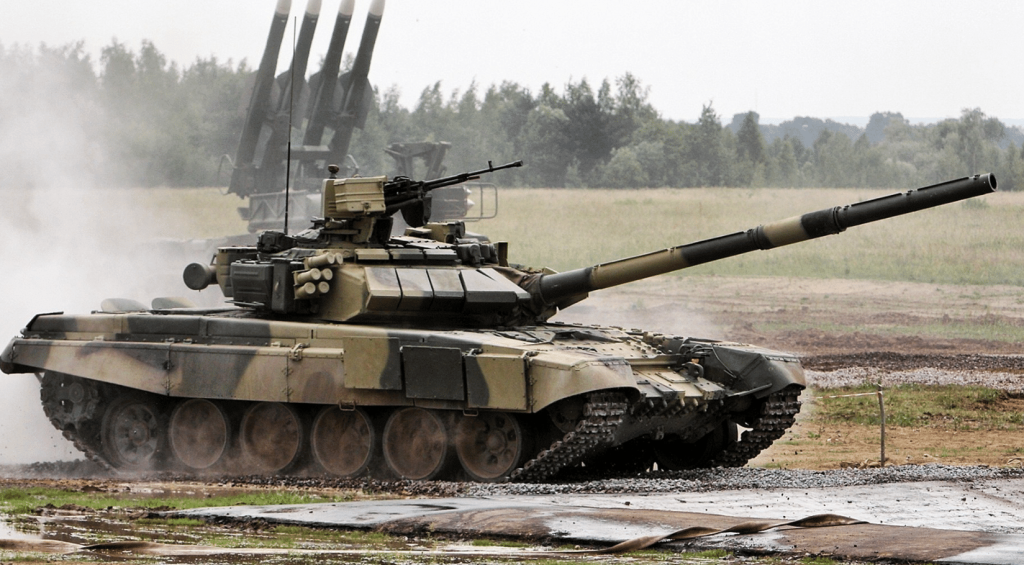
Where are the Russian UAVs? Very limited use and detection were observed. Limited UCAVs like the Orion are available. Lack of UAVs, especially for the protracted and persistent SEAD and interdiction missions will be hurting the Russians most!
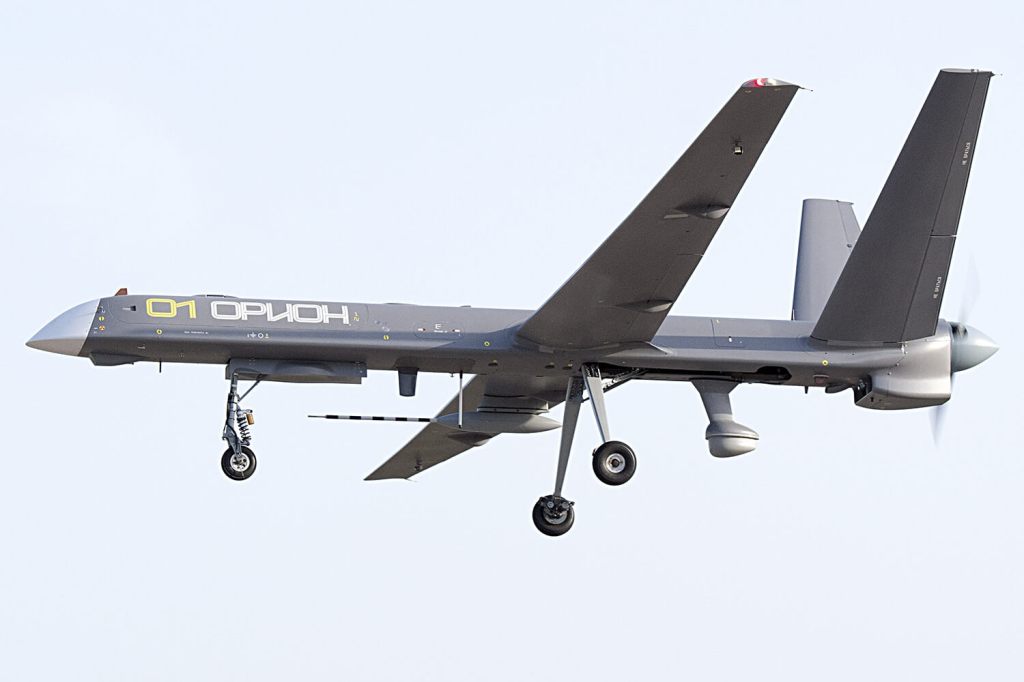
Air Defence. Shooting down enemy aircraft. Since war is all in Ukraine only, there was no air defence requirement for Russia, except to destroy any aircraft that tried to engage in combat with them. On the other hand, Ukraine used all AD assets including shoulder-fired missiles to knock Russian aircraft. Some very well know Russian pilots were downed or killed. The West has provided many AD weapons including Stingers.
Strategic bombing. Any time infrastructure is targeted, it becomes strategic in nature. Moscow has set Oil depot ablaze in Luhansk.
Mobility – Transport Aircraft, and helicopters bring mobility.

Naval Blockade and Maritime Air Power. Because Crimea had been annexed in 2014, the blockade was easier. By the time Russia invaded Ukraine on February 24, 16 Russian warships and a submarine had already entered the straits during military exercises preceding the war. The Black Sea was the site of early fighting on Snake Island and Russia’s incursions into Odesa. On February 25, Ukraine’s President Volodymyr Zelenskyy asked Turkey to close the straits to Russian warships. Zelenskyy then thanked Turkey for deciding to close the straits to Russian warships on Twitter, reportedly forcing Turkish President Tayyip Erdogan to make a decision. Within a day, Turkey called the conflict a “war,” essentially forcing itself to block the straits to belligerents. But on Monday, Turkey announced that it would close the strait to all warships, not just belligerent ones. Turkey made clear that warships would only be allowed to enter if were returning to their home port. The closure will do little to stop fighting in the short term. Russian warships currently in the Black Sea will be able to sustain themselves for two to three months without returning to their home ports, especially with the ability to replenish in Crimea. However, if the war wages on, warships that exit the Black Sea will be unable to return. Reportedly, four Russian warships canceled their plans to enter the Black Sea as a result of Turkey’s announcement.

Cyber warfare and electronic warfare are important. They seem to have been under-utilized. Even the stringer missiles require some radar input as a warning of incoming threats and directions. Obviously, they have not been jammed.
Psychological warfare extensive use of videos by the Ukrainian population. Also by Ukrainian TV. Therefore there was a need to attack the TV tower. The Western world is greatly supported through satellite communications. Internet was kept alive.
Leadership and Public Morale. Zelenskyy has led from the front. 85% of the Ukrainians want to live in a democratic setup with greater freedom and democratic values. This is a great strength. Even if a pro-Russian government is established, it will not be easy to govern people by force.
Today is Day 12. The tactical military campaign-related aspects are still evolving, and the lessons from the same would get analyzed in due course.
One weak area has been the logistic supply chain. Long offensive army conveys have been stuck without the tail catching up. Russia has not been able to use helicopter hopping as India did during the Meghna River crossing in Bangladesh. Even airborne assault has not been attempted by Russia in the classic sense though Special Forces were dropped around Kharkiv.
Since Ukraine is presently neither a member of the EU nor of NATO, the West has decided that there will be no direct military intervention of either organisation. Therefore No Fly Zone could not be implemented.
Russians have got Syrian volunteers to join the war.
Aircraft Losses both sides
Lots of claims and counter-claims. Russia has lost more than fourteen confirmed aircraft. Mainly Su 25, Su 30, Su 34, Mi-25 and Mi-8.
Ukrainians have lost similar numbers but nearly half a dozen MiG 29s on the ground.

Galvanizing the Free world
However, the Western countries have responded to the Russian aggression through massive crippling economic sanctions on Russia as a nation and on individual entities. They are also supplying Ukraine with defensive military systems. Russian Ruble has nose-dived and stock markets have been hit hard. Countries have put embargoes on all trade. President Putin, on being cornered, has announced that if Russia would be pushed further against the wall, it could use all the means at its disposal, including nuclear.
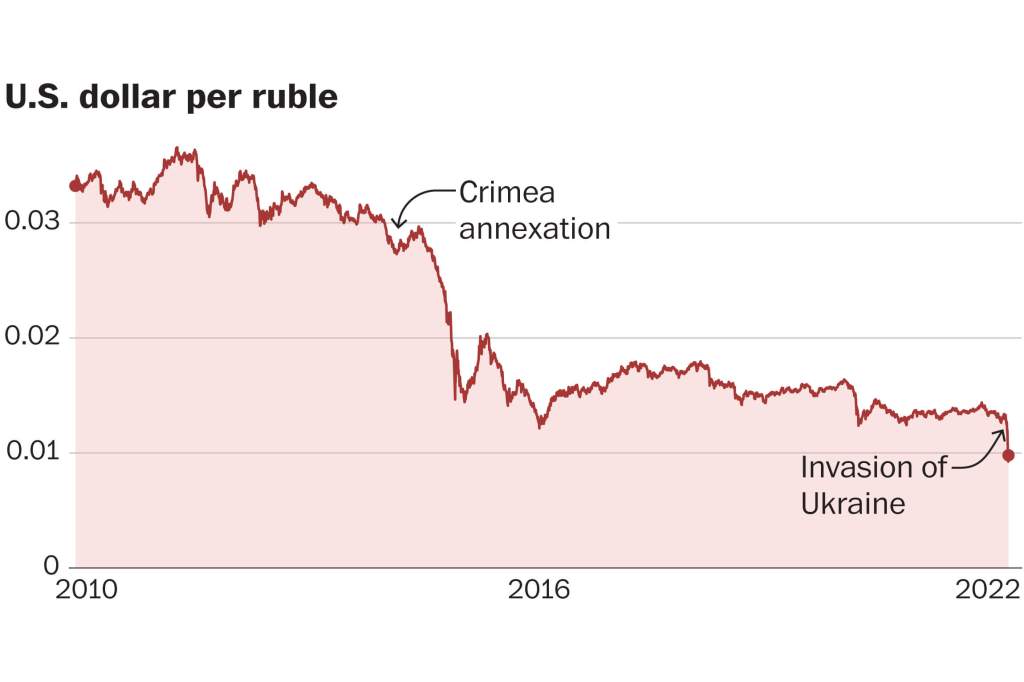
A major fallout of the conflict is that the Western countries have got galvanized and have grouped together. Both Germany and Japan have announced increasing their defence budgets. Ukraine and some other countries may be more willing to allow the stationing of nuclear weapons on their soil. Some of the traditionally neutral countries like Switzerland have chosen to take sides. Also, Sweden and Finland are now more open to joining NATO. American military-industrial complex will benefit the most.
China and India, among a few others, have chosen to abstain during the voting in the UN so as not to take sides. Notably, even China is being careful not to take sides. It is generally a wait and watch situation for many as the situation remains fluid and full of “uncertainties”. Nearly 20,000 Indian students studying in Ukraine are being supported for exit from the war-torn country. An air-train, “Operation Ganga”, has been established by Air India and Indian Air Force (IAF) to fly out stranded Indians from Ukraine’s neighbouring countries to India.
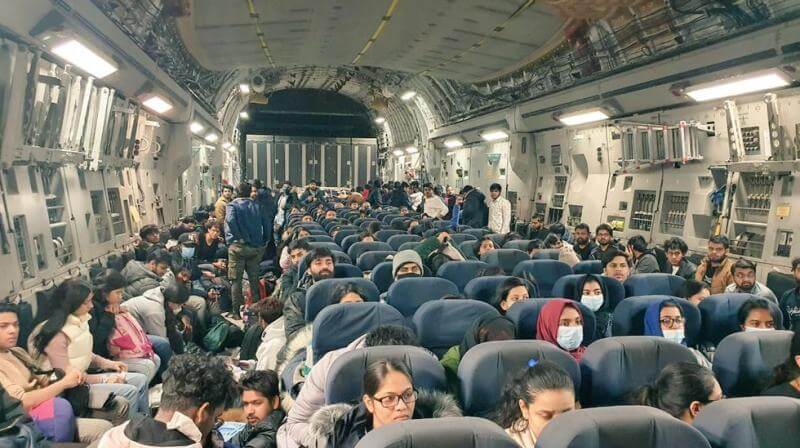
General Lessons for India
From the current battles between Ukraine-Russia-USA-‘the West’:
1- There is no soft power without hard power. We need to continue to build our hard power.
2- Peace is not the absence of conflict but good management of conflict.
3- In today’s world, nuclear deterrence works.
4- Whether there is an international treaty or not, ‘friendships between countries’ will always come second to a nation’s own security/self-interest.
5- Self-sufficiency in arms manufacturing, as much as possible, is an absolute necessity.
6- Anything can be weaponised. From financial protocols like SWIFT to civilian airspace to social media-based business to international sporting bodies. India should try to have at least one globally powerful platform in all these areas.
7- Private companies (like Google, Facebook, and others) will take political sides. Figure out how you can ring-fence against it. Support your domestic companies. Use Indian alternatives to Google / Amazon. Strengthen local so that they in turn can go global.
8- Lectures on human rights, freedom of speech, etc. are pure geopolitical tools. They mean nothing in reality and are a facade for some to do whatever they want.
9- Some countries continue to exhibit a superiority Complex. Your geography and skin colour determine how much the world will support you.
10- Build strong narrative influence globally. Indian businessmen should buy into newspapers, TV channels & social media platforms at a global level or start their own to operate globally. (well done to Zee for building WION).
11- Africa, Asia, Australia, Latin & South America are uninvolved in the war. Yet the ‘global’ media narrative screams “World War”. The global media rhetoric is “It could happen to you too”. The funny bit is that nobody said this same thing when the US invaded Iraq.
12- There is nothing called a global rules-based order when international rules can always be re-written / ignored based on who is breaking them.
The final long-term winners in this war are likely to be the USA (Arms Sales and more hold over Europe), France for the same reasons as they have nuclear energy security, and China (Russia under greater hold and more markets. The main losers will be Russia due to economic mess and also isolation and over-dependence on China, Germany due to higher defence budgets, energy insecurity, and loss of huge Russian market from toothpaste to cars. India may also lose. Russia will be no help against China. West may also be calibrated. India may have to increase dependence on the USA in long run.
Summarize Air Power Aspects
US involvement in the war is growing (and so are the risks of a wider conflict): “In less than a week, the US and NATO have pushed more than 17,000 anti-tank weapons” into Ukraine.
The Ukrainians still have a significant majority of their air combat power available to them, both fixed-wing and rotary-wing as well as unmanned systems and surface-to-air systems.
Air power has been under-utilized despite Russia having a clear advantage in numbers and quality.
Russia could not neutralize the Ukrainian AD assets.
All the airfields, especially in the West were not attacked.
There is a doubt about the combat status of the Russian Air Force because they have had limited exposure in Syria mostly.
Russia has perhaps been conserving assets in case of escalation.
Russia’s losses too have been higher than expected.
The Shoulder Fired AD weapons continue to be potent.
Urban warfare brings body-bags on both sides and one can get bogged down. Even when Russia wins, governing a population that is inimical to them will not be easy.
The nuclear word being used was unfortunate. More and more countries would now want to have nuclear weapons or be open to them being stationed on their soil.
The Recording of Interaction of 7 March 2022.


Premiss in which nuclear weapon is seen as just an oversized olive branch is not valid to say the least. Nuclear weapons possessed by strong stable corporate logic lead countries can be seen as an admissible fact of life in the modern world yet for let’s say Russia in Jeltsin’s age to express desire to develop one I’d say big no.
Russia in Putin’s age well ok. Why?
Unfortunately that one human trate nobody really likes; greed is the biggest deterrent of possible use of nuclear weapons.
Business men will not use it. Ideology infested, most often crippled by corruption, thus lacking true stability, countries so easily might. Or it’s safety could be compromised and it could too easily end up in the wrong hands.
Possession of nuclear weapons to prevent conventional warfare is a paradox. Any country with nuclear warheads in it’s arsenal must possess an overwhelming conventional force on it’s own able to protect country’s interests and ensure it’s security. Otherwise it becomes a threat more then a defensive capability.
LikeLike
@AnilChopra Sir What does BTG and ASPJ mean?
LikeLike
@AnilChopra Sir What do you think about the use by Ukraine of Turkish Bayraktar TB2 UCAVs? Are they as good as their Western counterparts?
LikeLike
BTG – battalion tactical group and ASPJ – Airborne Self Protection Jamming
LikeLike
Thank you for your reply, sir. Please be kind enough to share your opinion about Ukraine’s use of Turkish Bayraktar TB2 UCAVs? Are they as good as their Western counterparts?
LikeLike